|
THE ELECTRICAL HORSELESS CARRIAGE
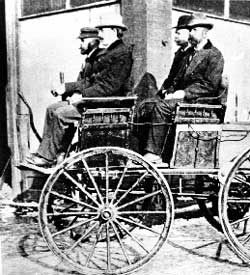
Morrison's 4-seater prototype
Last year, inventor William Morrison of Des Moines,
Iowa brought his mysterious electric carriage with its experimental battery
to father's company, the American Battery Company. My father, Major George
T. Burroughs, having lost his distillery business to fire in '85, has in
recent years turned his energies to expanding this fledgling storage battery
company, in which he serves as vice-president.
The ABC batteries previously had been used mainly for
train lighting and signaling. He immediately encouraged the company to
buy the rights to Mr. Morrison's invention, as he was very impressed with
the potential of the machine -- seeing it as an exciting opportunity to
expand the sales of ABC batteries.
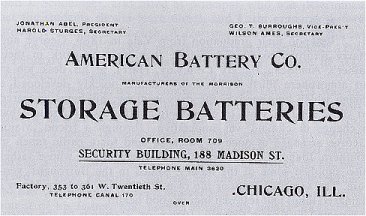 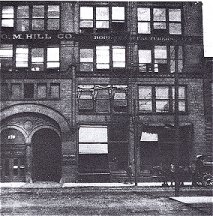
American Battery Co. offices ~ Two locations:
Security Building, 188 Madison St. and 172-174 South Clinton Street,
Chicago, 1901
Factory: 353 to 361 Twentieth St.
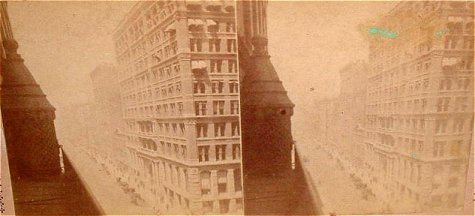
La Salle Street North from Adams
Soon after, father's colleagues, John B. McDonald and
Harold Sturges, caught the fever and shocked the neighbourhood by commuting
in the new horseless wagon from their West Side homes to the LaSalle Street
office.
Father met with the Fair planning committee and
they were interested in engaging a fleet of these vehicles to provide an
exciting means of transportation on the Fair grounds. Unfortunately, there
wasn't enough time to manufacture more of the machines, so they put all
their efforts into showcasing the original Morrison model at the ABC display
in the Electricity Building.

Electricity Building
|
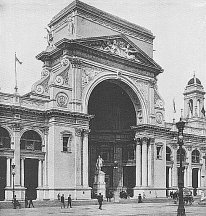
Hemicycle of Electricity Bulding
|
The company received permission, however, to
take the curious horseless carriage for regular excursions around the grounds
and to give demonstration rides to some of the more daring potential customers.
This proved to be an exciting development for me. I had tried my hand at
the controls of this machine during my visits to the factory and had impressed
everyone at the factory with my skill in maneuvering the vehicle. Father
was quite confident that I was the right choice to pilot the vehicle on
exhibition drives around the Fair grounds.
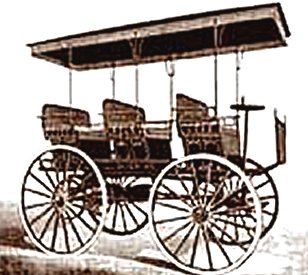
The contraption is a wonder to behold. It is designed in
the style of a surrey with a fringe-topped canopy -- but without the horses.
There are four high, spoked, steel-clad wooden wheels to negotiate the
streets and country roads, which are often muddy and rutted. Although
the start and stop controls of the vehicle are relatively simple, the unusual
method of steering the carriage takes a great deal of practice and expertise
as the vehicle fairly flies at a rate of over 15 miles per hour. Steering
is accomplished by grasping a ball attached to a horizontal "steering wheel,"
which turns a shaft connected to Morrison's patented rack-and-pinion steering
system. A powerful four-horsepower motor applies power to the right front
wheel through a modified Siemens armature, and this easily pulls the two-ton
weight of the unit over almost any road condition.
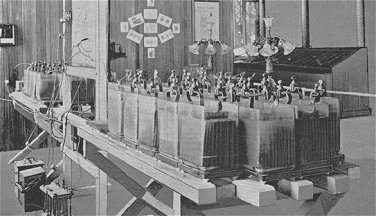
The 24 storage cell batteries that power the motor are
stored under three cushioned bench seats, which can carry 9 to 12 people.
Thanks to the quality of the ABC batteries, the vehicle can run for 13
hours at a time. The batteries -- 112 amps at 48 volts -- take 10 hours
to charge but this poses no problem as each night we wire them to the charging
equipment we have installed at the exhibit.
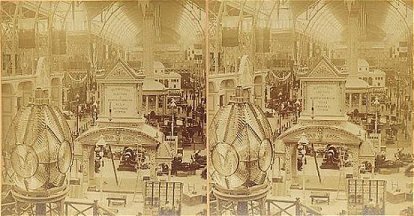
Two rival companies have set up nearby exhibits in the Electricity
Building: the Ward Electrical Car Company and Keller-Dagenhart with their
electric tricycles. Our product is clearly superior, however, being the
original and having the advantage of receiving many improvements from our
ABC engineers.
Company secretary Sturges, especially, has become intrigued
by the project and has spent countless hours with Mr. Morrison in improving
the design. Also on display are numerous vehicles powered by noisy, smelly
and very unreliable gasoline-burning and steam-powered engines. I can't
imagine any way that these crude methods of propulsion will ever compete
with our clean, silent, smooth running, and easy-starting carriage.
Our steam competitors don't tell their customers that
their engines often take 45 minutes to start and that they must stop continually
to take on fresh supplies of water. The gasoline carriages are also difficult
to start and they require a well-trained operator to shift their complicated
gear systems.
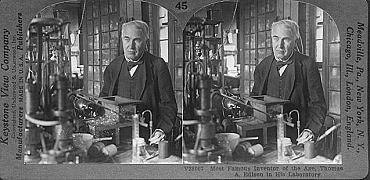
Yesterday, Mr. Sturges got into a heated argument with
Thomas
Edison of the rival Edison General Electric Co., who is renowned for
his development of electricity and for his many inventions, including the
Kinetoscope -- a moving picture device that he has unveiled at the Fair.
Mr. Edison
said he believed gasoline, not electricity, would provide the dominant
power source for the automobiles of the future.
"As it looks at the present," he said, "it would seem
more likely that horseless carriages will be run by a gasoline or naphtha
motor of some kind. It is quite possible, however, that an electric storage
battery will be discovered which will prove more economical, but at present
the gasoline or naphtha motor looks more promising.
It is only a question of a short time when the carriages
and trucks in every large city will be run with motors."
Electricity Building Floor Plan (Click for full-screen image)
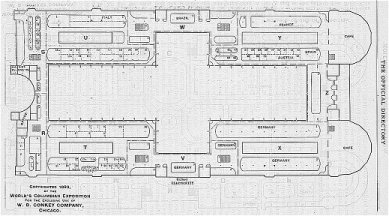
Ha! Father has his own ideas on this. He believes that a basic Morrison
model can soon be produced for under $1,000, although he says the elaborate
one-of-a-kind model we are exhibiting probably cost the inventor and our
company twenty times that.
Our amazing self-propelled vehicle, whether sitting in the display area
or racing around the grounds, is certainly one of the Fair's most popular
attractions -- an incredible achievement in this incomparable World Exposition,
with its wonderful exhibits of futuristic inventions. Not a day goes by
when some reporter from somewhere in the world doesn't stop by to interview
one of us for a newspaper story.
Many of them are so awe-struck by the number and diversity of the inventions
here that they say that everything that can be invented has been invented.
We live in a marvellous age and one can hardly imagine what the next century
will bring.
|


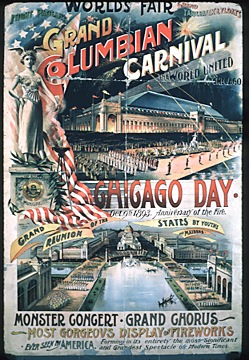
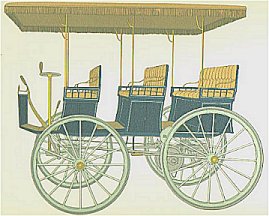
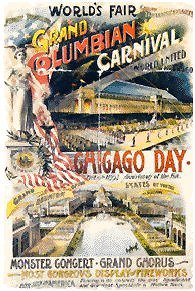
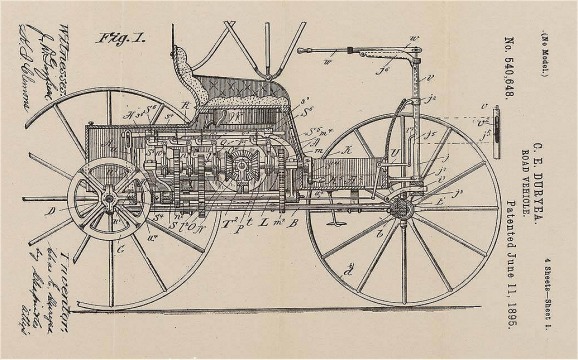
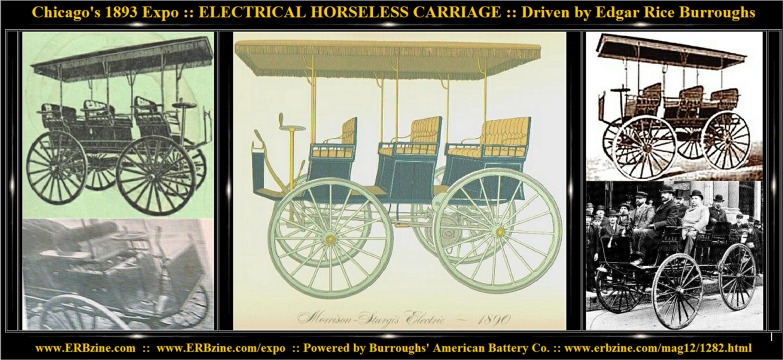
![]()

![]()
![]()

![]()